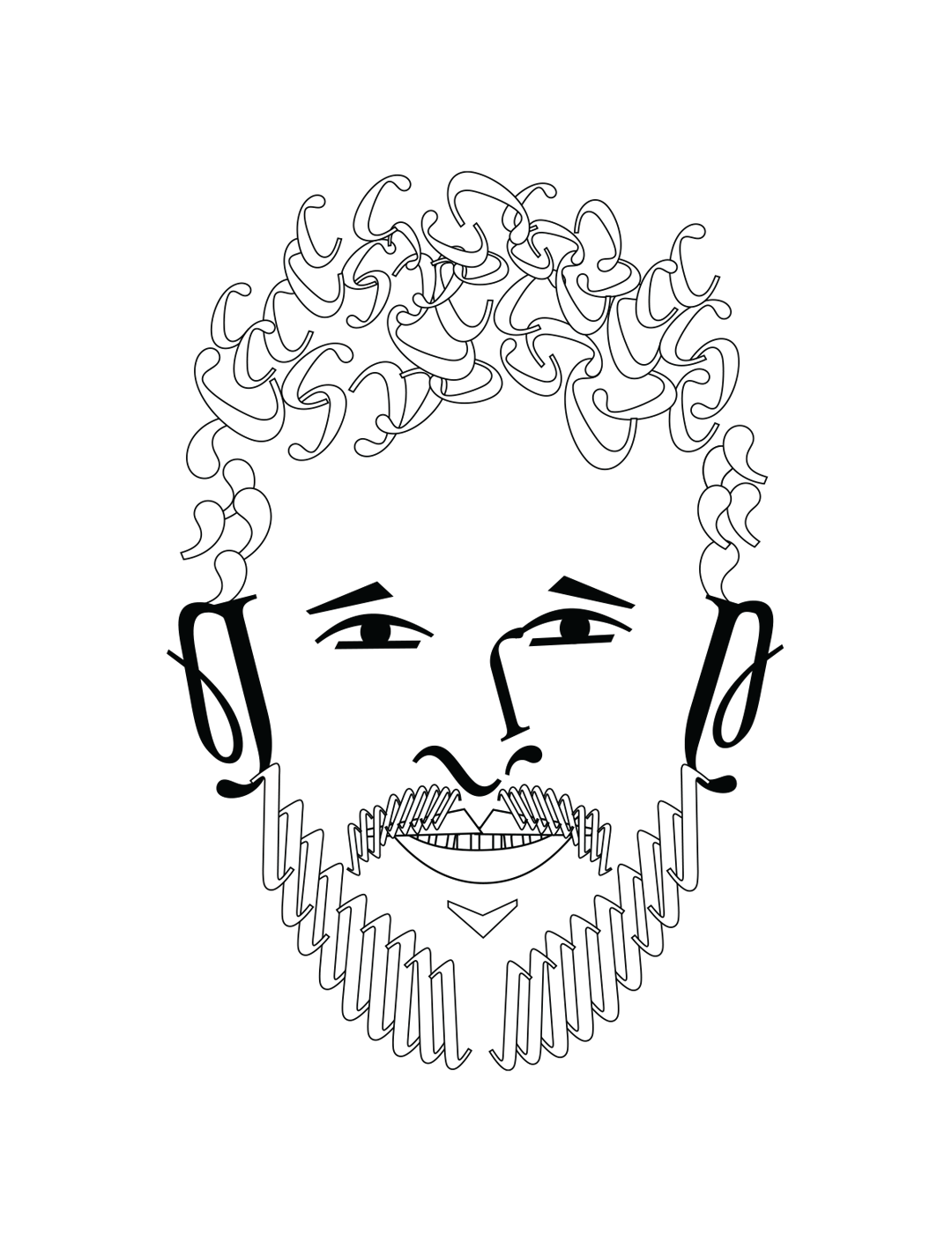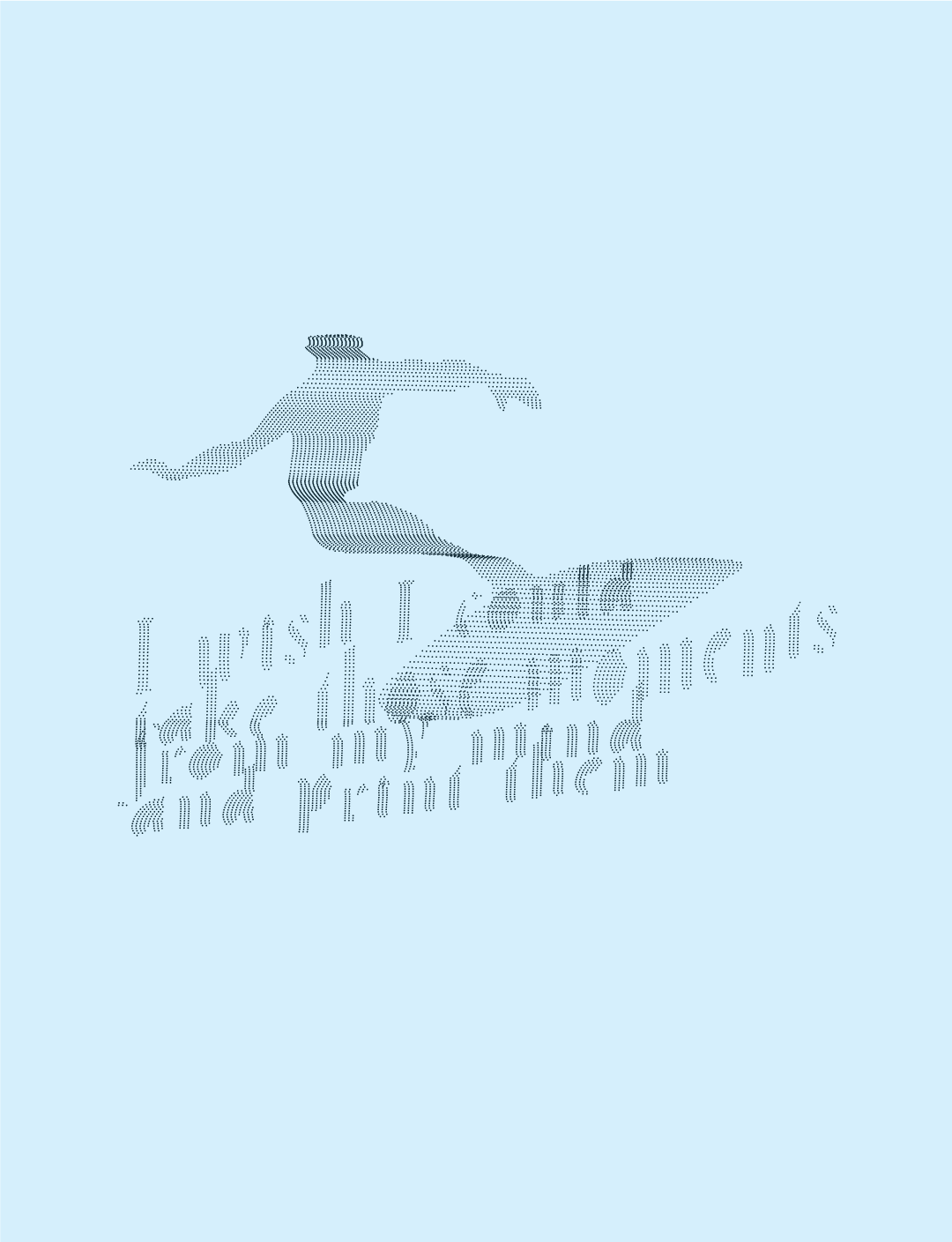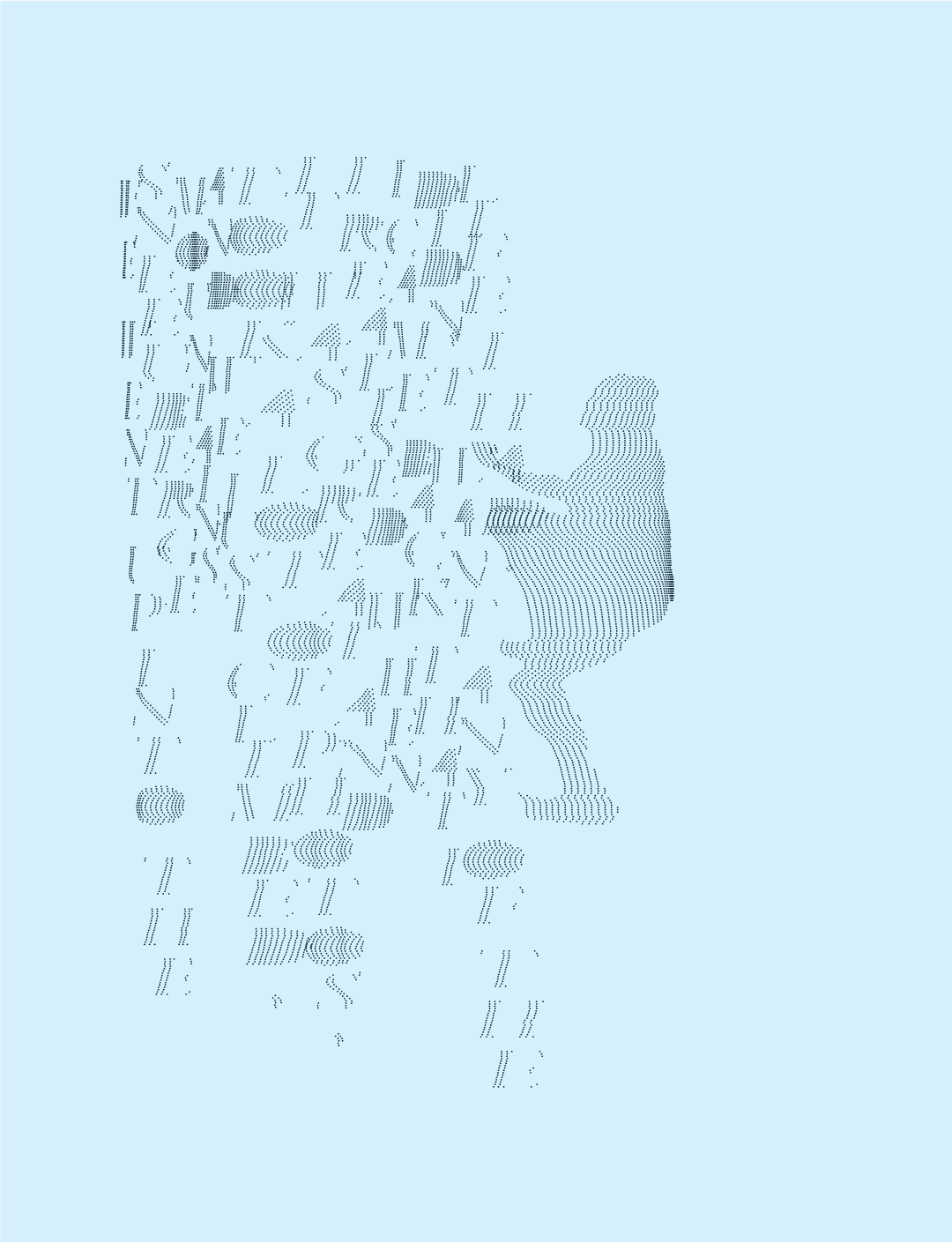So, you were getting into surfing but when did the Photography start to come into it and bringing it to Instagram?
It happened rather quickly and a bunch of things happened. So, my partner who was a photographer at the time, she was on Instagram all the time, taking photos or models she was shooting and putting on Instagram. Spending so much time in Lightroom, in Photoshop, all that stuff. I was like, “That’s cool.”
We were hanging out all the time but she was doing this thing and I was like not doing anything and then, work kinda chilled out a little bit. Maybe for six months I did nothing [laughing] just sat in the house, just trying to get work to do, asking for things and they were just like, “Nah, just chill” and I thought I was going to get made redundant but it never happened. It was really weird, it was a really weird time and during that same time I went to my mates wedding and he-- it was in Colombia.
So, we went there and on the way back we went to LA for three days and a mate of mine said, “I need a drone.” Because he was a videographer, “I need a drone, can you buy me one from LA?” It was just when the Mavic 1 came out and I said, “Yeah, I’ll buy you one.”
Didn’t buy him one. Bought myself one [laughs] and brought it back! “This is so cool!” Flying it around and then, I took a photo and took a straight down photo, edited it a bit based on what she’d told me, what she’d learned and then I was like, “That’s cool, I’ll put it on Instagram like you’re doing.” And I think I used to get like five likes for stuff and it got thirty-five likes and I was like, “Oh, maybe people like this stuff?” So, I started. I did it again and it grew from there.
You’ve always had a pretty good handle on a work life balance, and you’ve clearly taken steps to make it happen. Why do you think that’s important?
I think-- because I work from home the balance is easy because I don’t get tired of going to the city. I don’t get tired commuting, I don’t get tired eating shit food in the city and so I have this energy to get up at 5am, go to the ocean and swim around and my partner always says, “My days go much better when I’ve been in the ocean in the morning.” So, I get up and I’ll be like, “I’ll go to the ocean.” And I’ll get back and it will be 7:30. It’s an hour and a half before I have to start work but-- so I’ll upload my photos, read my emails.
I’m already working and it just kind of melds together. And then I’m like, it’s because I’m free. Because no one’s looking over my shoulder, they’re only judging me by what I deliver. So, in the middle of the day I can do half an hour of editing or take a nap or whatever and then when my energy comes back at like, 7 o’clock at night, I’m working again. So, it’s-- I’m just free to do what I want, when I want and I get the maximum out of each day, that’s why it’s working.
Lorenzo: You don’t have all these weird interludes, like now there’s a commute, or now there’s a lunch break…
Craig: But I, when I did commute I did a lot of work as well. I’d sit on the ferry and I’d-- I built an e-commerce website for my partner who was selling leggings at the time. I built that, The Moves website on the train in London, things like that. So-- but-- I think-- I had a drive to make stuff, yeah, that’s the thing, I like making stuff. If I’m making something it doesn’t feel like work, even if it’s something shit [laughs].
Lorenzo: So work would be the actual admin you’ve minimised around the actually thing.
Craig: Yeah, I’ve killed the admin. Killed the waste of time and that’s why I think I’ve got a lot of energy to make things, so yeah…
“The balance is easy because I don’t get tired of going to the city. I don’t get tired commuting, I don’t get tired eating shit food in the city and so I have this energy to get up at 5am.”

Surf & Earth has become a bit of a business, how did that come about?
Let me tell you why Surf & Earth started [laughs]. So, my personal Instagram was growing, I opened it up, I started to post there, it’s doing great. Then I took this photo and was like, “This is the photo that’s going to-- this is the one that breaks me through. This is the best photo I’ve ever taken.” [Laughs], I was like, “This is going to be amazing!”
But, because I’m a programmer, I also started writing a bot that was going to start hacking Instagram to get me followers and so maybe like five days before I posted this amazing photo I started the bot off [laughs] and it failed and I was like, “Ah, oh well, I’ll look at that later.” And then I posted and this amazing photo got no likes, like maybe five likes or something and I noticed that Instagram had shadow-banned me so I was bummed. [Laughs]. And shadow-banning, I had to learn about what that was and how to see that it had happened on my account, I was like, “Oh no...” And then I just thought, “Okay, I’ll start over, just build a new account, I’ll privatise my own account again and just start posting on this thing.”
So, I just started again and this image I had to wait, “Okay, I’m going to build this up again based on all those photos that I started with, slowing go up, every few days post something, then I’ll eventually, after a few weeks, I’ll get this amazing photo up.” So, I got there and I got to this amazing photo and my likes were around one fifty, this one went to, I think, six or seven hundred and I was like, “I made it!” and then it was picked up by other big accounts and I was like, “Maybe I’m okay at this” and that photo is still my main, still my number one seller. Even three years later.
So yeah, that’s when I realised maybe Surf & Earth was going to be a thing that I could make money with.
Lorenzo: And what’s been the process around selling things, setting up Etsy stores, etc...
Craig: Yeah, it’s been really organic, it’s been people asking me for prints and me just being-- and then me telling them how-- to get it what size they want and then them never getting back to me. It really annoyed me, it’s a waste of my time. So I thought, “Okay, I’ll create a SquareSpace website.” So, I did that, put some prints on there, then when I got those messages, it’s just a URL. It’s me, reducing the amount of time I’m wasting.
So, I put that URL up and then people started, like, buying one or two and I’m like, “Shit!” [Laughs]. “How am I going to deliver this shit?” So, then-- at the time, it’s all like, timing. At the time, Pete McKinnon was pushing the Canon Pro 1000 and I was like, “That looks like a good printer, I can afford it.” So, I bought it and I started printing on that, selling that, learning about how to print, learning about different types of paper and not really spending any money because people were buying these prints. Not for much, but for more than I was making them for.
So, I was doing that, learning more and then someone asked for a print that was A0 and then I thought, “Maybe I should get somebody else to print this?” But, I didn’t know, but it turns out I’m a control freak, so, instead of doing that, I bought an industrial-sized printer [laughs]. It was more than a car, and I put it in my house and I learned even more and then all of a sudden it’s like this industrial thing in my house [laughs] and I thought, “Cool, I’m printing for other people…” I’d printed for me, but I thought, “Maybe it’d be cool to print for other people as well.” So, I put it out there, I did another SquareSpace website, that said-- because most of my followers are photographers-- I said, “Hey, if you want me to help you print, I can do that.” And then they went there, they asked and I spent a lot of time talking to them about what I know about printing. And then they do that, they send me their print, I print it for them and then I send it to them or their customers, so, it’s like these two things… A little bit of a fulfilment centre…
I’m not rich, I’m not making tonnes of money from this, I’m just-- it’s just enough to sustain the hobby. To sustain the thing that I really love doing. So, it’s interesting. Printing is technical because it’s-- and I sit on my computer for a long time; either programming or doing Lightroom or working out how to print and it’s cool.
Lorenzo: That’s the thing with projects like this; if you wrote the business canvas for it; you just wouldn’t even start it. If the intent was to make money. But if you just do it and enjoy it...
Craig: Yeah, you just do it. Like, I remember at school they would say, if you want to start a business you need a big business plan; here’s the things that need to be in it and I was like, “I never want to start a business.” [Laughs], “Because I don’t want to do the business plan.” But yeah, building it organically… It’s not a business... It’s just something I’m doing. Maybe one day...
Lorenzo: But there is people buying stuff…
Craig: Yeah, there is money coming in and products going out, so I guess it’s a business [laughs].
Lorenzo: But it is an interesting way to think about it, where you’re not trying to make it a business.
Craig: I’m just doing things I like doing and it’s making a little bit of money, so...
You mentioned Instagram before, and Facebook and thinking about “likes”, thinking about how important all that is. Is there a persona now that you have to be on social media and post a certain amount; times a day, etc?
So, I think-- I don’t do this for Instagram, I do this for me. I post twice a week because if I didn’t say I’d post twice a week, maybe I’d go to once a week, maybe I’d never post ever again. So, it’s good to give yourself a schedule just to keep it going, keep learning and if I started hating it, I’d stop doing it. But I still really like it, so. But, it’s good to have a schedule to make me keep to it.
And then I noticed, the things I noticed that-- 8 o’clock at night is a good time to post, Sunday nights when everyone’s at home for like, work the next day, looking at Instagram. It’s a good time to post, on a Sunday night. So they’re-- those things are just things I noticed and then I just stuck to them. So, there’s no-- I do think about likes a lot, probably too much but-- and sometimes it stops me taking photos I want to take or posting photos that I want to take but, likes are-- people say, “Oh, likes aren’t great for mental health” and I think that’s true for personal but for a business you need feedback.
These aren’t selfies, this is a piece, do you like it or not. If not, what did I do wrong. So-- and it’s not like, this is me at a beach, nobody liked it, nobody likes me [laughs] it’s not like that. So from a business point-of-view feedback is really important. From a software point-of-view, you know, from a design point-of-view feedback is really important. It’s important to get it out there, see if it’s good or not based on feedback and then adjust. I think that’s how you grow.
How much conversation are you having, outside of the likes, is that something you’ve had to consider, are people commenting in a way that you need to respond?
So, I try to respond to absolutely anything, every message I get. Unless it’s weird [laughs]. I try to respond to absolutely everything, sometimes I just can’t but most of the time it’s just people saying, “This is cool! This is nice!” And I’m like, “Thank you, thank you, thank you, thank you.”
Sometimes, there’s like personal messages saying, “I really like this, this is why…” And a lot longer and I feel like, “Thank you” is not good enough but it’s all I can say. So-- but…
Lorenzo: I guess when you set things up in a way where it’s not you it starts becoming a whole, “Do I respond in the third-person” or…
Craig: Yeah, there was that but-- so in my captions I always try and tell stories about myself to make it a bit more personal but I don’t want to be putting photos of myself on there or my lifestyle because-- just, I don’t-- that’s not what I’m selling. But, people keep telling me, “You need to be more personal on your Instagram. People need to see your face.” “Like, really? Maybe they won’t like it” [laughs]. People might see my face and unfollow.
Lorenzo: Also, if you look at the expansion of this, what if one day there’s five photographers doing Surf & Earth.
Craig: Yeah, it could, there’s someone who does that and there’s two photographers and their account is amazing. The main person I think about who is really doing it great is Aquabumps and he posts everyday and doesn’t get great likes but he doesn’t care he’s got this great community built around him in Bondi and I guess that’s from twenty years of doing it but he has that perfect balance of posting everyday and every now and then you see his face and I think that’s the balance I’m looking for.
Lorenzo: You could gamify it, like you’re in it, but only some people notice or know it’s you.
Craig: There are a few photos like that, just not on my Instagram. They’re around [laughs], if you really want to know what I look like, you can find out. The other thing is, when people do find out and they hear me speak, they say, “Oh, you're English.” [Laughs] Or, “Oh, I thought you’d look very different.” And I’m like, “What does that mean?” [Laughs].
So, what’s next?
So like I was saying down the road, the dream is an office. It’d be amazing. A gallery downstairs with my photos, just like that place we just went into (Craig and I visited a photography gallery in The Rocks before the interview.) and then in the back or upstairs will be a print shop where people came to buy my prints or people came and made appointments and I talk them through how to make their prints.
And then, the other two things that I’m working on is, I have this site called Feed and it’s-- you have your Instagram; you have a fake version of your Instagram, the grid and then you create a new post, put it on there and you title your stuff, you do all your hashtags, tells you if your hashtags are good or not. You-- then you look at the image you’re going to have and then you can post it from there.
That’s the thing-- like, people have done that but I could do it better.
Lorenzo: Instagram has always been the one that traditionally was the most difficult to schedule, somewhat intentionally.
Craig: Yeah, that’s changed that. They’ve got a new Facebook API, so they’re-- You can get an API key which I haven’t got yet, I’ve got the old API key-- You can post, you can schedule, you can do all that stuff so it’s a solved problem if you can get the key, so...
Follow Craig Smith on Facebook and Instagram @surfandearth.
Proofreading by Thiago Figueiró. Photography by Lorenzo Princi.




